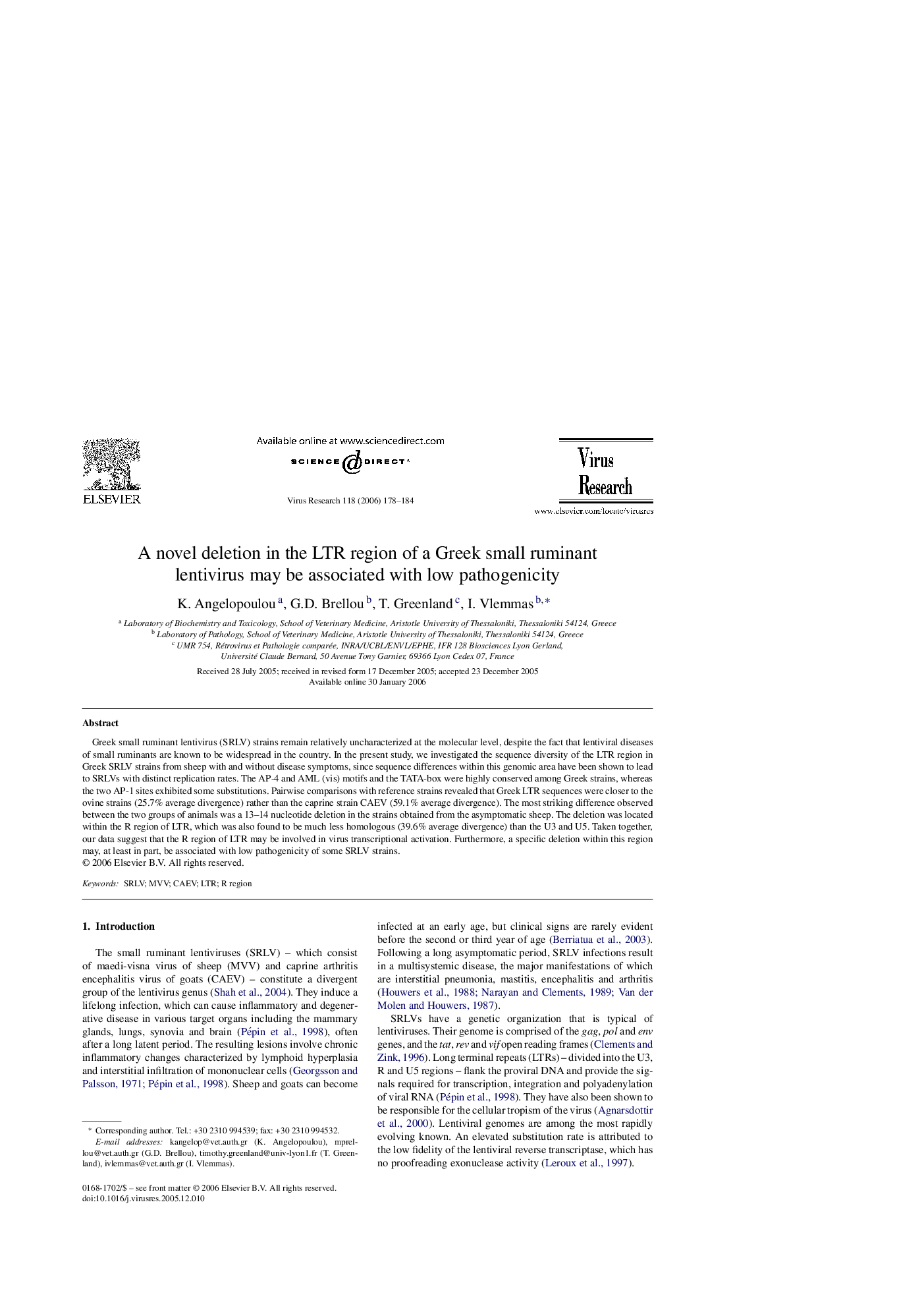| Article ID | Journal | Published Year | Pages | File Type |
|---|---|---|---|---|
| 3431355 | Virus Research | 2006 | 7 Pages |
Greek small ruminant lentivirus (SRLV) strains remain relatively uncharacterized at the molecular level, despite the fact that lentiviral diseases of small ruminants are known to be widespread in the country. In the present study, we investigated the sequence diversity of the LTR region in Greek SRLV strains from sheep with and without disease symptoms, since sequence differences within this genomic area have been shown to lead to SRLVs with distinct replication rates. The AP-4 and AML (vis) motifs and the TATA-box were highly conserved among Greek strains, whereas the two AP-1 sites exhibited some substitutions. Pairwise comparisons with reference strains revealed that Greek LTR sequences were closer to the ovine strains (25.7% average divergence) rather than the caprine strain CAEV (59.1% average divergence). The most striking difference observed between the two groups of animals was a 13–14 nucleotide deletion in the strains obtained from the asymptomatic sheep. The deletion was located within the R region of LTR, which was also found to be much less homologous (39.6% average divergence) than the U3 and U5. Taken together, our data suggest that the R region of LTR may be involved in virus transcriptional activation. Furthermore, a specific deletion within this region may, at least in part, be associated with low pathogenicity of some SRLV strains.
